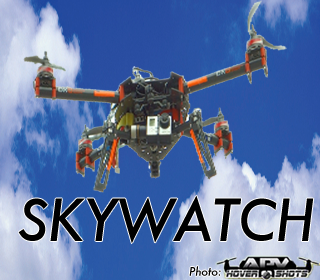Great Lakes Echo
In 1863, Confederate forces defeated the Union in the Battle of Chickamauga in southeastern Tennessee.
Flash forward 150 years and you can get a different perspective on that battle — this time from the air.
A technology used in modern weapons of destruction has made its way into historic battle re-enactments.
Drones equipped with video cameras are giving viewers an aerial perspective of the battles that took place many years ago.
“The positive is that there is a new way of making the film and representing the events,” said Michael Stamm, professor of history and journalism at Michigan State University. “To me, it just looks like a different camera angle, a different visual perspective. It doesn’t change anything about the narrative.”
Capturing and remembering the battle
The Battle of Chickamauga, a Civil War battle in Tennessee and Georgia, just celebrated its 150th anniversary.
“We knew that getting in the air would give us a different perspective,” said Patrick Smith, a videographer for the Chattanooga Times Press who worked with Chosen Productions to produce a video of the battle reenactment.
“Renting a plane or helicopter was going to be too expensive, so the drone was a cheaper option – more agile, less obtrusive,” Smith said.
But while drones may improve telling the story of historic battles, not everyone is a fan.

This story is part of Great Lakes Echo’s ‘Skywatch’ series (UAV Photo: APV Hovershots)
The reenactors’ perspective
The new technology may draw people in, but some of the battle re-enactors aren’t happy.
“I hate them,” said Trevor Steinbach, secretary and treasurer of the 1st Brigade of Illinois, a group of Civil War re-enactors. “They are for production purposes only. They should be banned from national reenactments and only used in movie shoots. Let the movie companies pay re-enactors to ‘stage battles’ if they want drone shots.”
Steinbach is not the only one unimpressed.
“I was at (the battle of) Chickamauga (reenactment) and heard the drone over me,” said Steve Fratt, president of the 1st Brigade of Illinois. “It sounded like a huge cloud of hornets and was a bit annoying.”
Fratt and Steinbach are both volunteers who perform reenactments and events throughout Illinois.
Smith said that others enjoyed seeing the drone and asked about where they could see the video.
“I think drones have to be used in the right situations,” he said. “In this particular setting, it was very useful and improved our coverage of the event. We’ve gotten a lot of positive responses from our aerial coverage. That [noise] feature could discourage its use at reenactments since it annoys the re-enactors. However, the results are impressive visually.”
Steinbach finds irony in the use of drones for Civil War reenactments.
“Drones detract from us representing the 10,000 real Union doctors and 4,500 real Confederate doctors that served the men in the Civil War,” he said. “We re-enact to honor their memory as they helped those wounded and dying on the field.”
It’s an issue with which the battle re-enactors appear to wrestle.
“It is an interesting trade-off,” said Fratt. “Before using a drone at our events, I would want the officers to see the results from another event to come to a consensus about its use.”
Telling the story
The “Gettysburg Story” is a documentary of the three-day Battle of Gettysburg, 150 years ago. It includes aerial footage shot with drones by FreeFly Cinema and under direction and production of Jake Boritt of Boritt Films, LLC.
“Drones have advanced and gotten much better in recent years,” said Boritt. “Along with advances in camera technology and stabilization, an amazing new camera platform was born. We are the first film to use this technology on the Gettysburg battlefield.”
While re-enactments may not be the best place for drones to fly, they are able to tell historic stories. As technology improves and people become more technologically savvy, drones give the videographer a creative way to share the same history to a younger eye, Boritt said.
“The story of Gettysburg will be told as long as the United States exists — as long as democracy exists,” he said. “People will come to Gettysburg to look for the meaning of what happened on this ground for years to come. The story will be told – we are simply using technologies for a new audience.”
While weather conditions and drone regulations, especially on federal land, may limit videographers from attempting to create aerial video, the drones give the ability to explore new territory.
“The high-resolution imagery captures battle sites from 400 feet in the air to inches above the ground,” said Boritt. “Aerial drones allow us to follow the flow of battle over the exact ground men fought and died on 150 years ago.”
